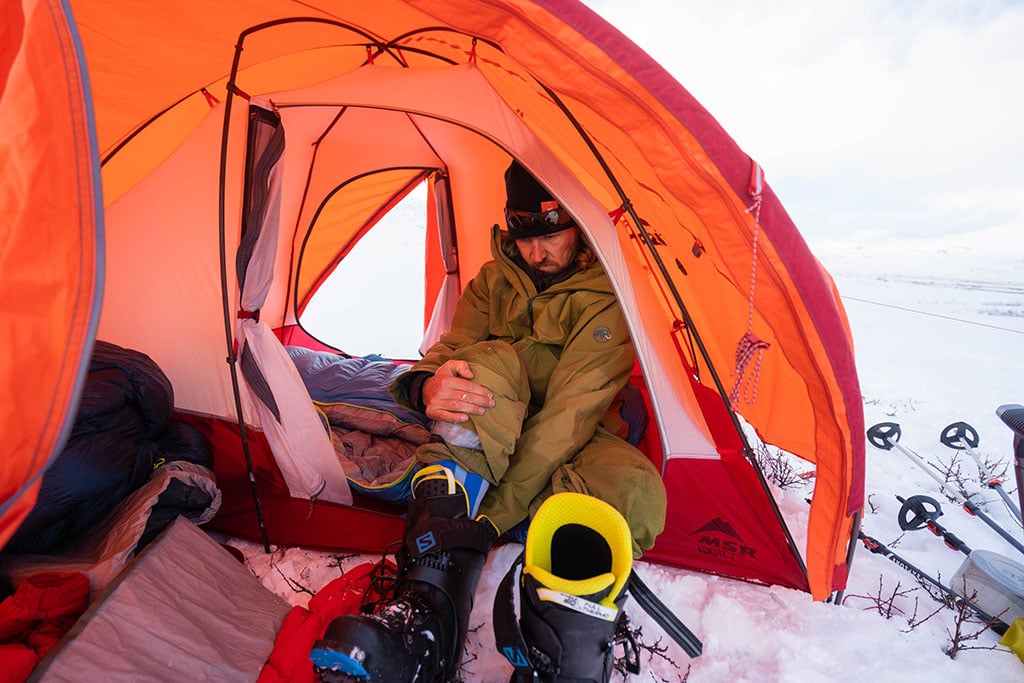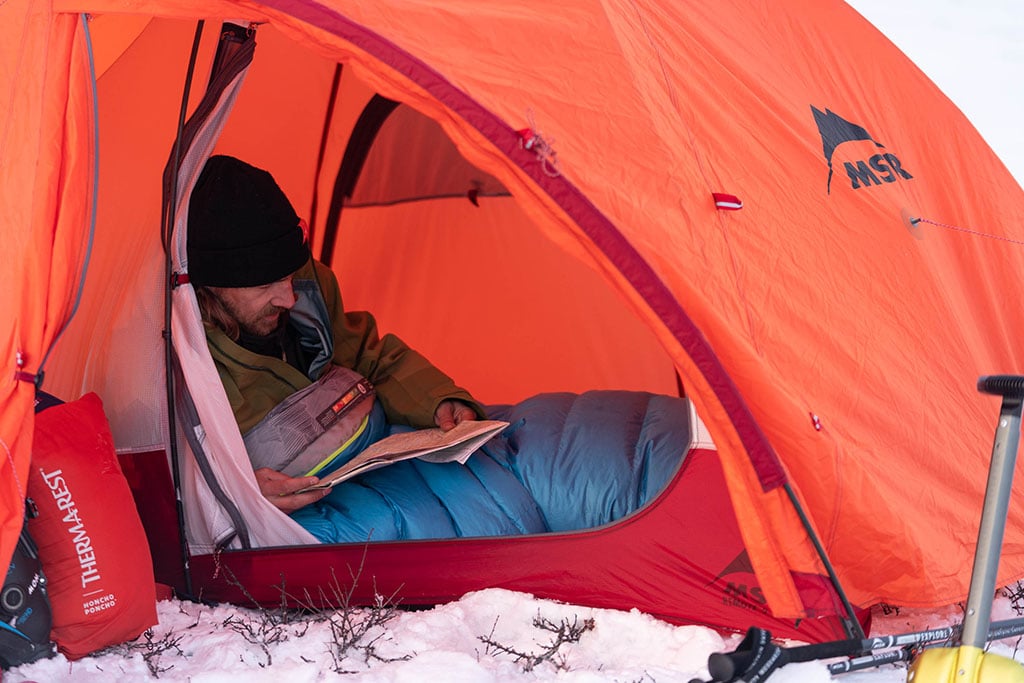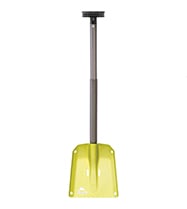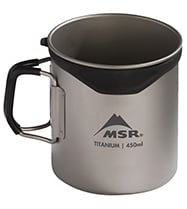9 Tips for Staying Warm While Winter Camping
There’s no escaping it; cold temperatures come with winter camping. But don’t let thoughts of frigid fingers and toes stop you from pursuing that overnight ski tour or snowshoe adventure. With the right tips and tricks, you can stay warm while winter camping and get the rest you need to charge hard on the next day’s mission.

1. Dress in Layers
First things first: dress to impress for cold-weather camping. Dressing in multiple layers—including base layers, mid-layers, puffies and shell jackets—gives you greater control over regulating your body temperature. As you move through the activities of the day, you’ll work up body heat. As you do so, it’s important to avoid sweating because as it dries, sweat cools, wrapping you in a cold cocoon. Managing your body heat by constantly adding and subtracting layers helps you prevent sweating as much as possible—a key component of staying warm on winter adventures.

2. Get Out of Sweaty Clothes (Pack an Extra Baselayer)
Once camp is constructed and you’re ready to settle down for the evening, remove your sweaty layers ASAP. While it may be hard to strip down in harsh conditions, you’ll be grateful you did. Throwing on dry clothing revives your warmth (this includes your socks). Then, layer up with as many pieces as you need to feel comfortable. Top them all off with a parka-grade puffy.
On the coldest nights, tossing on a hardshell jacket over your giant puffy can be a solid move because shell jackets trap heat exceptionally well. There’s no shame in sleeping in a hard shell if it means a good night’s rest, just be careful that you’re not trapping too much moisture inside your cocoon.
Also keep in mind that even on day trip–at the top of your skin track or uphill part of the day–stripping down and putting on a dry top base,layer is an absolute game changer. Try it. You’ll see.

3. Two Sleeping Pads are Better Than One
Your camping mattress insulates you from the cold ground and snow, and two pads add up to greater insulation and warmth than one. A pad’s warmth (technically, its thermal resistance) is measured by its R-value and the good news is, the R-values of two pads add together to offer combined insulating power.
The tried-and-true two-pad combination is a winter-grade air sleeping pad with reflective fabric, layered on top of a closed-cell foam pad with reflective surface. It’s hard to get warmer than this setup in a light, packable sleep system.

4. Layer Up a Sleeping Bag + Quilt
Finding gear that offers winter warmth yet remains light and compact in your overnight pack can be tough. That’s where layering your winter sleeping bag with a featherweight quilt can be a game-changer. These days, advanced materials make sleeping bags and quilts lighter and more efficient than ever. For hardly any weight penalty, a featherweight quilt provides insurance against the coldest of nights, delivering that extra layer of ultralight warmth that can make all the difference.
5. Put a Hot Water Bottle in Your Core Region (Not at Your Toes)
Rather than filling a Nalgene® bottle with hot water and placing it at your toes (the typical advice), place it instead at your groin. From that core position, it’ll heat the blood that travels throughout your body, reaching all of your extremities and warming up your whole body faster. The difference is noticeable, and this little trick might just be the first one you pass along to the next camper. Just remember—use caution when dealing with hot water, as it’s easy to burn yourself (NEVER use a metal bottle for this!) and be sure to crank down that lid to prevent leaks.

6. Wear a Balaclava to Bed
You lose a significant amount of heat through your head. Covering your dome is one of the fastest ways to increase your body heat, but beanies and jacket hoods tend to slip off during the night. A balaclava, on the other hand, stays put, trapping that hard-earned heat. In addition, it provides a breathing hole for ventilation. Layer it under a beanie or hood for maximum warmth as you drift off to sleep.

7. Vent Your Tent
While it may seem counterintuitive, airflow in your tent is important during the winter. As you breathe, you release warm vapor inside the tent. When that vapor hits the cold tent fabric, it collects as condensation, which drips back down on you, or freezes, covering everything in a fine dusting of frost. Opening the vents on your tent, even partially, helps prevent you from waking up entombed in an icebox of frost that will later melt, making you wet and miserable.

8. Eat & Drink—A Lot
Your body burns calories to stay warm, so snacking constantly keeps your internal furnace cranking. At night, high-fat and high-protein foods burn slower than high-carb meals and keep you sustained (and warmer) longer.
Hydration is also a key factor in how well your body functions in the cold. Allowing yourself to become dehydrated only strains your ability to stay warm. Drinking plenty of water reduces fatigue. If all that water causes the need to go in the middle of the night, do so. Your body spends energy to heat the liquid in your bladder, so the trip outside is worth it. If you’re hardcore (or really just lazy), turn an old WIDEMOUTH water bottle into a pee bottle that you can use without going outside. And while it might seem gross, sleeping with said bottle of pee (with an extremely tight-fitting lid!) is a good way to recycle that heat. Maybe save that little tip for an emergency.

9. Hand Warmers, Heated Gloves, Heated Boots
A little extra help from technology goes a long way toward confronting the cold with confidence. While you can’t bring a space heater, can you bring compact solutions to keep your fingers and toes warm, well functioning and ready to handle the tasks before you.
In the end, the more comfortable you are, the more rest and energy you’ll have to tackle your winter endeavors and enjoy the solitude of camping in the snow.
In our quest to make you a more capable winter adventurer, we’ve covered a range of winter topics:
- Pro Tips for Snow Camping
- How to Choose a Winter Tent
- Why Choose a Liquid Fuel Stove for Winter
- Our Best Gear for Winter Camping
- A Beginner’s Guide to Avalanche Safety
- How to Dress & What to Pack for Winter Adventures
Give those articles a read to boost your knowledge about winter camping, and have fun out there!
Updated. Originally Published January 26, 2020.




